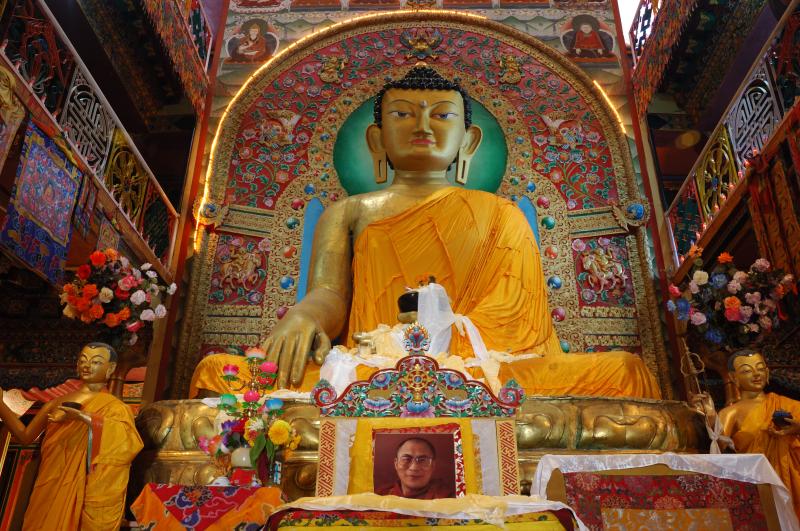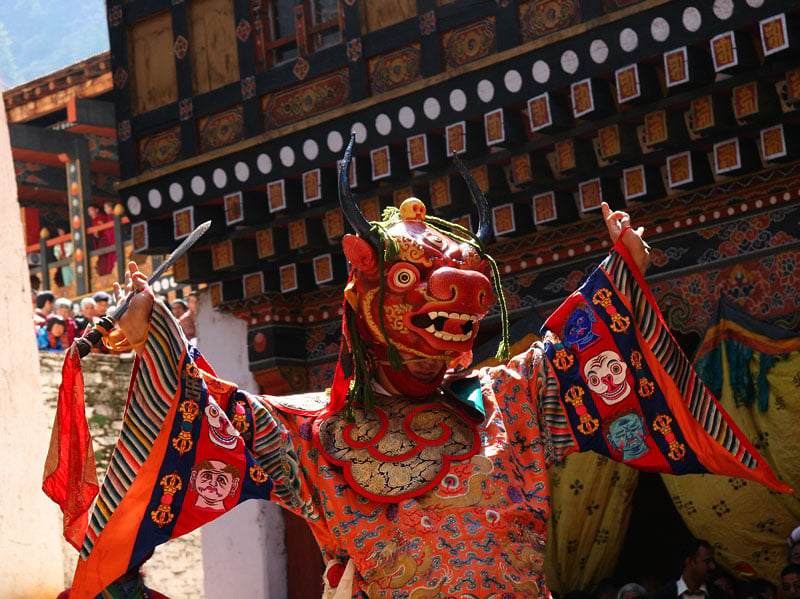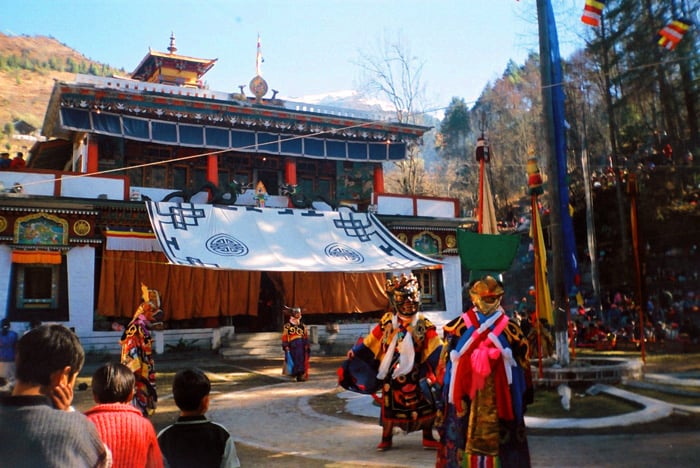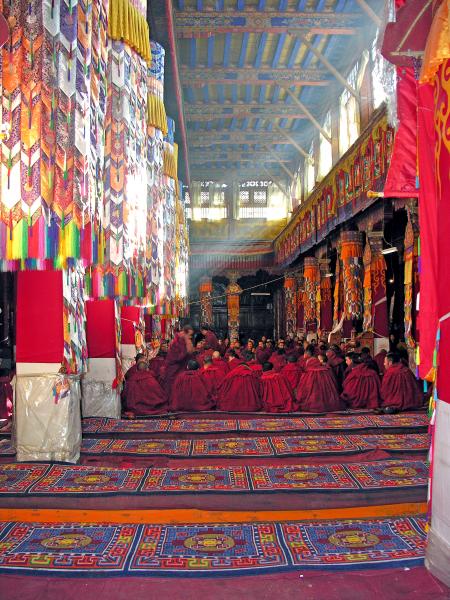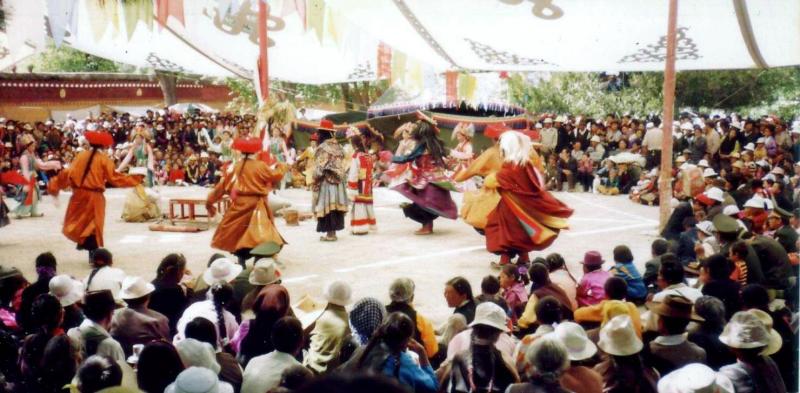About Losar - Tibetan New Year
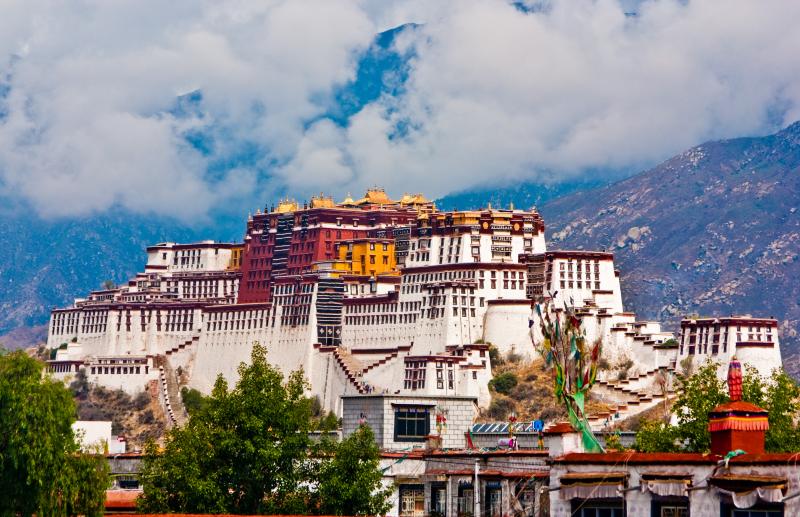
Losar also involves gratitude for the harvest, similar to Vaisakhi in India. As Buddhism seeped into Tibetan culture, celebrations of Losar adopted a Buddhist tilt in the rites and customs. It is believed that during the reign of Pude Gungyal, the ninth king of Tibet, there lived an old woman named Belma who taught people how to calculate time based on the phases of the moon. This belief led some locals to refer to Losar as Bal Gyal Lo, where "Bal" refers to Tibet, "Gyal" to the King, and "Lo" to the Year. The enthronement of the king is also celebrated on this day.
When is Losar Celebrated?
Losar 2025 is celebrated on February 28th to March 02nd, 2025How is Losar Celebrated?
Traditionally, the Tibetans follow the lunar pattern in their calendar; wherein one year is made up of twelve months. Tibetan New Year commences on the first day of the first month of each lunar year. Tibetan customs and rituals for commemorating the new year are deeply rooted in Buddhist ideas and beliefs. Historians also say that the celebrations of Losar in Tibet can be dated back to a period before Buddhism came into existence.
Pre-Buddhist Losar involved people igniting incense sticks to dedicate to the local Gods and spirits. Their belief was the happiness of the Gods and spirits would ensure the wellbeing of the people in the New Year.
Highlights of the Losar Festival
Cham Dances: Monks perform intricate mask dances in monasteries to symbolize the triumph of good over evil.
Rituals and Prayers: Offerings are made to deities, and prayers are recited to cleanse the past year’s negativity and welcome good fortune. The eight auspicious symbols are commemorated by drawing them with white powder in homes and monasteries.
Feasting: Traditional dishes like guthuk (a noodle soup with symbolic ingredients) and khapse are prepared and shared with family and friends.
Decorations: Homes and monasteries are adorned with prayer flags, butter lamps, and auspicious symbols.
Cultural Performances: Folk songs, traditional dances, and theatrical performances bring communities together to celebrate.
Commemorating Deities: Deities like Dharampalas (the eight frightful deities protecting Buddhism) and wrathful deities are honored through rituals in monasteries.
Losar Festival in India
India, with its rich diversity, embraces the Losar Festival in regions influenced by Tibetan culture. Here’s how it is celebrated in different Indian states:1. Ladakh
In Ladakh, Losar is the most important festival of the year. The celebrations begin with cleaning and decorating homes with images of deities, auspicious symbols, and traditional motifs. Monasteries play a central role, with special prayers, mask dances (Cham dances), and rituals to ward off evil spirits. Families visit monasteries like Hemis and Thiksey to offer prayers and partake in the festive spirit.Read more on Losar Festival in Ladakh
2. Arunachal Pradesh
In Arunachal Pradesh, the Monpa tribe celebrates Losar with great enthusiasm. Traditional rituals include offering locally brewed alcohol to deities and performing dances to traditional music. Villages come alive with colorful decorations, and people dress in traditional attire to exchange greetings and gifts. The Tawang Monastery becomes a hub of activity with elaborate ceremonies and cultural performances.3. Himachal Pradesh
The Tibetan settlements in Himachal Pradesh, particularly in Dharamshala and Spiti Valley, mark Losar with fervent celebrations. Homes are cleaned and adorned with prayer flags, and local monasteries organize prayer sessions and cultural performances. Tibetan delicacies such as khapse (deep-fried pastries) and chang (a local barley beer) are shared among family and friends.4. Sikkim
In Sikkim, where Tibetan Buddhism has a significant presence, Losar is celebrated with traditional rituals, prayer offerings, and cultural events. Monasteries like Rumtek host special ceremonies, drawing locals and tourists alike. The festival is marked by communal harmony, with people from diverse backgrounds joining the celebrations.Origin of Losar Festival
The origins of Losar date back to pre-Buddhist times when Tibetans practiced the Bon religion. It was initially celebrated as a winter solstice festival to honor the spirits of nature and the mountains. With the advent of Buddhism in Tibet, the festival evolved into a New Year celebration, blending Bon traditions with Buddhist rituals.Losar’s historical significance also ties back to agricultural practices, as it was a time to express gratitude for the harvest. The month before Losar, preparations begin in homes with the commemoration of the eight auspicious symbols. The festival’s significance lies in its emphasis on spiritual renewal, communal harmony, and cultural preservation. It serves as a reminder to let go of the past year’s struggles and embrace the new year with positivity and hope. The rituals of Losar, such as lighting lamps and reciting prayers, reflect the Buddhist philosophy of compassion and wisdom.
Eight Auspicious Symbols - Losar Celebrations
- Parasol is representative of Royal Dignity
- A pair of golden fish represent the Good Fortune to follow the coming year
- Conch Shell helps in spreading the sound of Dharma
- Lotus Blossom is representative of the clarity of mind that would lead in the path to attain enlightenment or nirvana
- Vase is representative of prosperity and longevity
- Victory Banner is representative of victory over worldly pleasures like lust, desires and fear of death, also leading to nirvana
- The Wheel of Dharma is perhaps the most important Buddhist Symbol. This is representative of the Noble Eightfold Path that would lead to Nirvana, thereby ending all suffering
- The Eternal Knot is representative of the union of wisdom and compassion, reminding one the far-reaching effects thereof
Day 1
The last two days of the old year are called Gutor, is when people begin to prepare for the New Year.
The first day is spent cleaning the house. The kitchen especially has to be cleansed, because it is where the food is prepared, and hence the most important part of the house. The chimney is swept free of dirt. Special dishes are cooked. One is a soup served with small dumplings. The soup is made from meat, wheat, rice, sweet potatoes, cheese, peas, green peppers, vermicelli and radishes. The fillings for dumplings include scraps of wood, paper, or pebbles.
A special noodle called guthuk is made, which is made of nine different ingredients including dried cheese and various grains.
Dough balls are made in which people place various ingredients, such as chillies, salt, wool, rice, and coal, which are then handed out. The ingredients that one finds hidden in one’s dough ball are supposed to be a lighthearted comment on their character. For example, a person finding chilie in his dough is thought to be loquacious.
Day 2
On the second day, religious ceremonies are held. People visit the local monastery to worship and give gifts to the monks. They also set off firecrackers to rid evil spirits, which are believed to be lurking around. Houses are thoroughly cleared, after which people get dressed, and proceed to have a reunion feast, which is similar in spirit to the Han Chinese New Year feast.
Day 3
On New Year’s Day, people wake up early and put on new clothes after having taken a bath. They then make offerings to the gods by placing them on their household shrines and worship them. This day family members also exchange gifts. Families have a reunion dinner, usually consisting of a kind of cake called kapse and an alcoholic drink called chang, which is drunk to keep warm.
Traditionally, the housewife wakes up very early on the new year day. After cooking a pot of barleywine, she sits beside the window awaiting the sunrise. As the first ray of sunshine the earth, she takes a bucket and heads to a nearby river, or well, to fetch the year’s first bucket of water, which is seen as sacrosanct, clearest water of the coming year. The family fetching the first bucket of water from the river/well is believed to be blessed with good luck for the coming year.
The Losar Festival is more than just a New Year celebration; it is a profound expression of Tibetan culture and spirituality. From the mesmerizing Cham dances to the sumptuous feasts, every element of Losar reflects joy, renewal, and togetherness. Whether celebrated in the high mountains of Ladakh, the monasteries of Arunachal Pradesh, or the vibrant Tibetan settlements in Himachal Pradesh, Losar offers a unique and enriching cultural experience. For anyone looking to witness the magic of Tibetan traditions, the Losar Festival is a must-see event that beautifully encapsulates the spirit of harmony and new beginnings.

